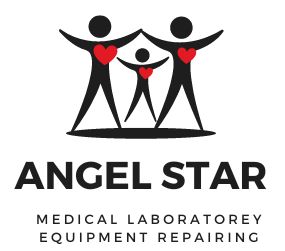Angel Star Medical and laboratory equipment repairing services play a critical role in ensuring the functionality, accuracy, and safety of medical and scientific instruments. These services encompass a range of activities aimed at maintaining, troubleshooting, and repairing various types of equipment used in healthcare facilities, research laboratories, and industrial settings. Here are some key aspects of medical and laboratory equipment repairing services:
Equipment Covered: Medical and laboratory equipment repairing services typically cover a wide array of instruments and devices, including but not limited to:
- Diagnostic equipment (e.g., X-ray machines, MRI machines, ultrasound machines).
- Clinical laboratory equipment (e.g., analyzers, centrifuges, microscopes).
- Surgical instruments and equipment (e.g., endoscopes, surgical lights, anesthesia machines).
- Patient monitoring systems (e.g., ECG machines, blood pressure monitors).
- Research laboratory equipment (e.g., spectrophotometers, chromatography systems, incubators).
Maintenance and Preventive Services: These services involve routine inspections, calibration, and preventive maintenance to ensure that equipment operates optimally and meets regulatory standards. Regular maintenance helps to identify potential issues before they escalate into major problems, thereby minimizing downtime and reducing the risk of equipment failure during critical procedures.
Troubleshooting and Repair: When equipment malfunctions or develops faults, repairing services involve diagnosing the problem, replacing defective components, and restoring functionality. Repair technicians are trained to troubleshoot complex issues and perform repairs with precision to ensure the equipment’s reliability and accuracy.
Certification and Compliance: Repairing services often adhere to industry standards and regulations to ensure that repaired equipment meets quality and safety requirements. Technicians may be certified by relevant regulatory bodies and trained to comply with specific guidelines for different types of equipment.
On-site and Off-site Services: Depending on the nature of the equipment and the extent of repairs needed, services may be provided on-site at the healthcare facility or laboratory or at an off-site repair facility. On-site services offer convenience and minimize downtime, while off-site services may be required for more extensive repairs or refurbishments.
Vendor Support and Contracts: Many healthcare institutions and laboratories engage in service contracts with equipment vendors or third-party service providers to ensure timely support and maintenance. These contracts may include provisions for routine maintenance, emergency repairs, replacement parts, and technical support.
Training and Education: Repair technicians undergo specialized training to acquire the skills

